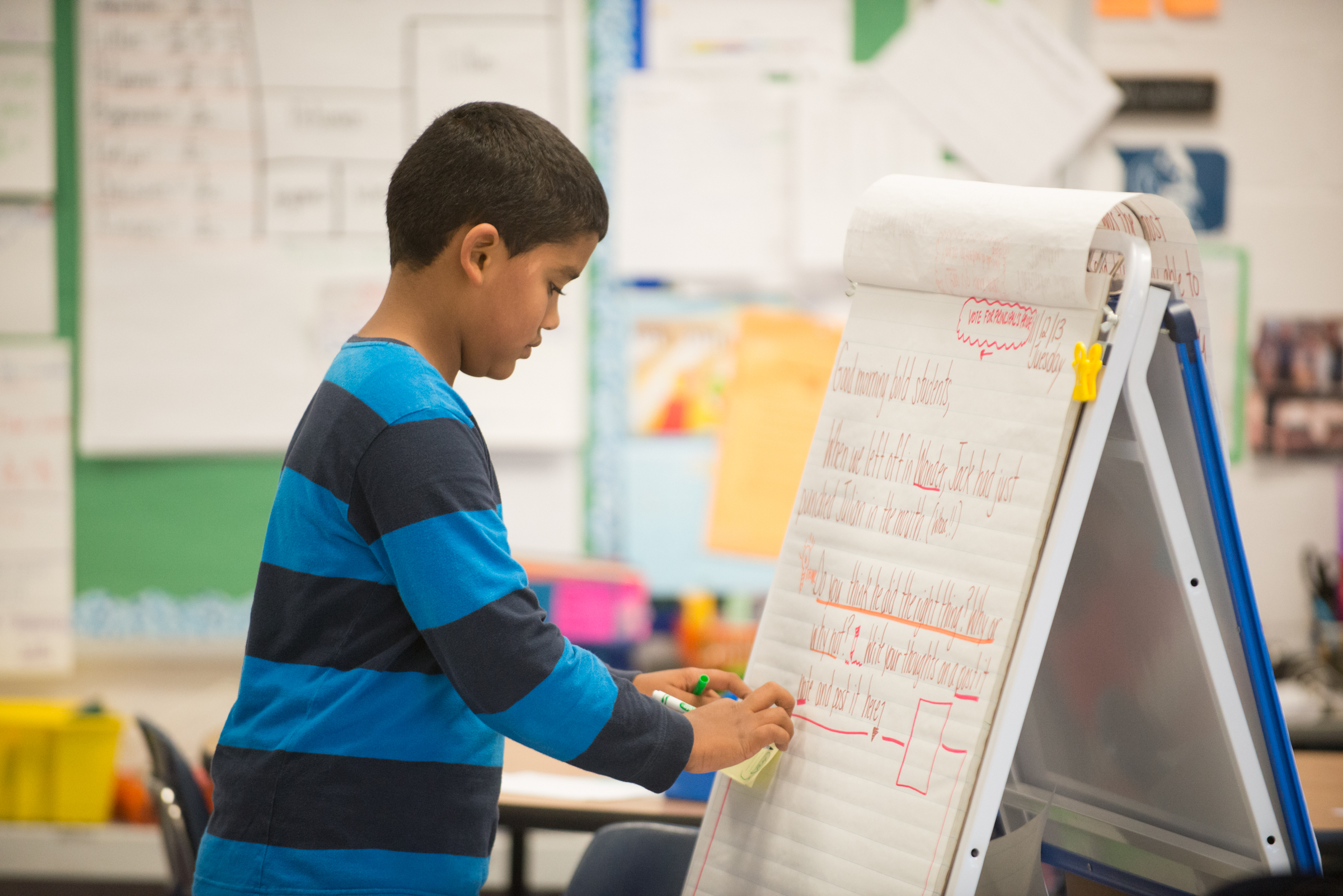News and Announcement Charts

 Question: What’s one activity you’ve found effective for the interactive part of the Morning Meeting News and Announcements chart?
Question: What’s one activity you’ve found effective for the interactive part of the Morning Meeting News and Announcements chart?
A: I’ve found math challenges to be very effective. For example, I might write on the chart, “Write either a mixed fraction or an improper fraction and convert it to the other.” The students would then write things like “3 2/3 = 11/3” or “13/4 = 3 1/4.” During the meeting, we go over each entry. Students like these activities because there’s something about being able to do math that makes them feel especially competent. And, to ensure that they are able to do these, I always make sure we’ve gone over the material a lot before putting it on the chart.
Louann Ritchie is a fourth-fifth grade looping teacher at Southern Aroostook Community School in Dyer Brook, Maine.
A: I incorporate bits of word study into the charts whenever possible. In the younger grades, I sometimes made a stack of word cards and asked each student to place a card into a category on the chart according to vowel sound or spelling pattern. With fifth graders, I ask them to come up with the words themselves. For example, once when we were working on different ways to spell the long “o” sound, I asked the students to think of words that have the various spelling patterns and write them in a space on the chart.
With all grades, I try later in the day to refer back to the morning’s activity, perhaps by using the word sort as part of a word study lesson or using the words students generated to start a new spelling-pattern chart.
Mike Anderson teaches fifth grade at Dondero Elementary School in Portsmouth, New Hampshire. He has also taught third and fourth grades. This past fall he won a Milken Education Award for excellence in education.
A: The interactive element can be very useful in helping children prepare for an upcoming special activity. For example, if we’re going to have an assembly later in the day, I might write, “What’s one job we need to remember today at the assembly?” The children would then write, “Keep our hands and feet to ourselves,” “Sit so others can see,” or “Keep our lips together when other people are talking.” With first graders who can’t write well yet, I would make a list of jobs and ask them to check off one that is most important for them. Of course we’ll have learned and practiced these jobs as a class, so this would be a review.
The next day, if the class did particularly well, I might invite the children to “Write one thing our class did well in assembly yesterday.” This reinforces the helpful behaviors. If the class experienced some difficulties, I might ask, “Name one thing our class can do better at assembly next time” to help students plan for making improvements.
Cindy Leonard is a first-second grade looping teacher at Cambridge Elementary School in Jeffersonville, Vermont.
Tags: Arrival time, Bulletin Boards